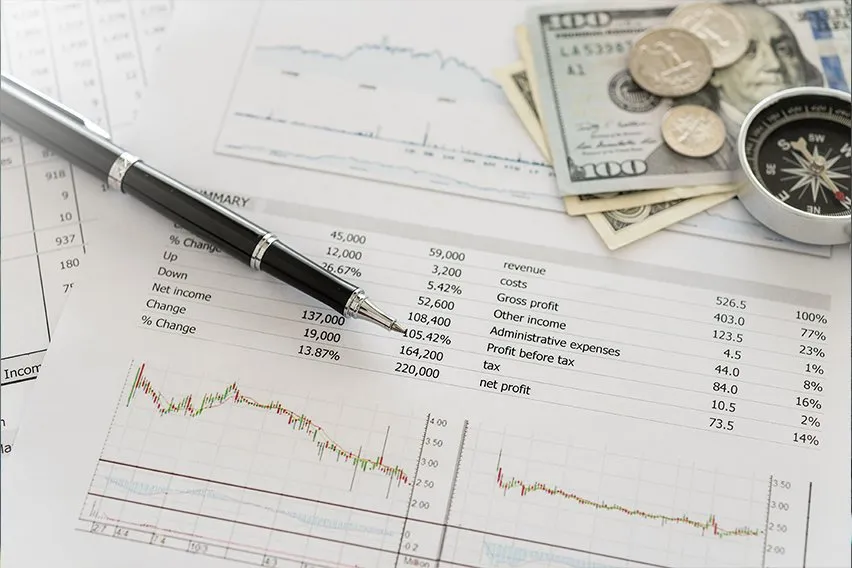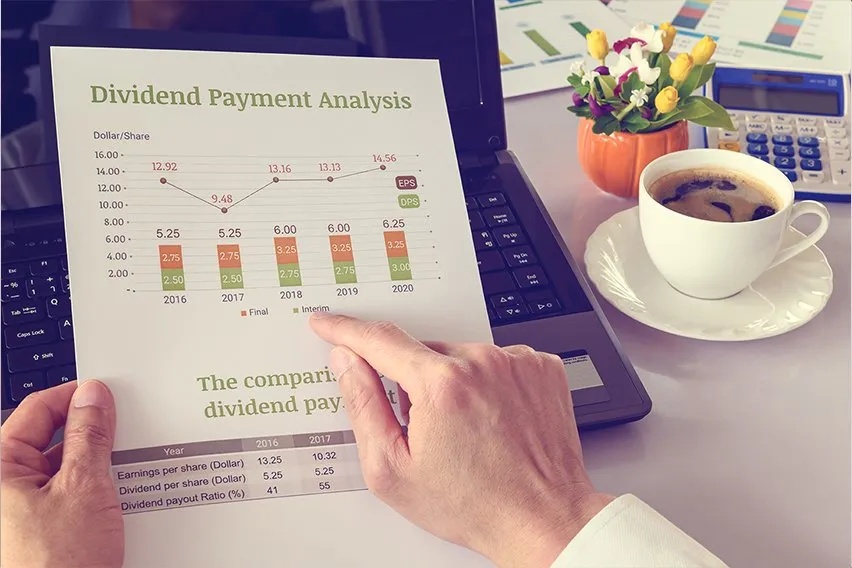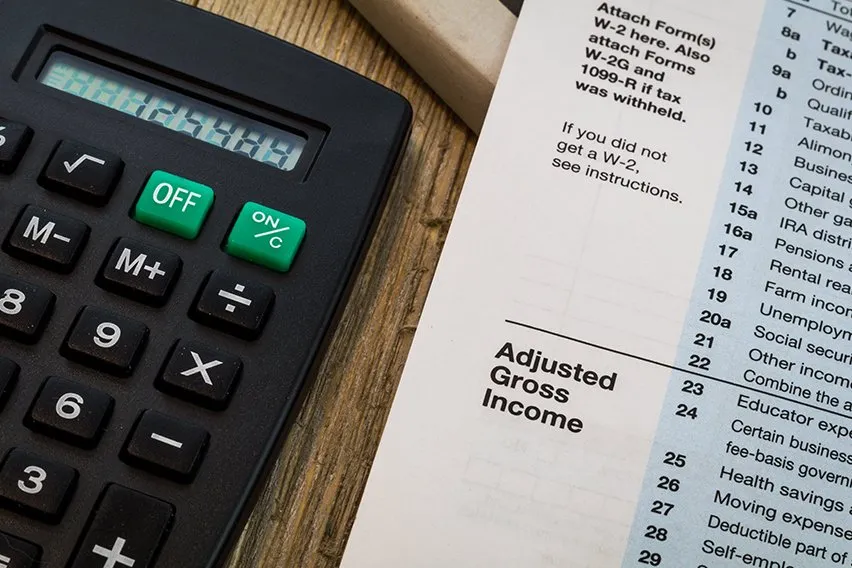What Is a Cash Flow Forecast and How to Make It?

Are you trying to figure out when you can afford to hire a new member of staff? Or when you can invest in another business property or website upgrade?
All of these types of business decisions are made so much easier if you have a working cash flow forecast.
Here’s What We’ll Cover:
How to Write a Cash Flow Forecast
How to Avoid the Most Common Cash Flow Forecast Mistake
How Does Cash Flow Forecast Help My Business?
What Is Cash Flow?
Cash flow is the amount of money that comes into and out of your business – its lifeblood.
Ideally, your business stays in a positive cash flow position – with more money coming in, than going out. We all know that you need cash to keep the doors open. But being cash positive is also crucial for investing in growth and making informed business decisions.
Running out of cash as a business ultimately means insolvency. If your liabilities are bigger than your assets, your revenue doesn’t cover your debts and you can’t secure any financing, your doors will have to close.
Using a cash flow forecast to predict your inflow and outflow over a set period of time really helps your business thrive. And avoids that awful worst case scenario.

What Is a Cash Flow Forecast?
As part of its definition, it’s important to be clear on what a cash flow forecast isn’t.
A cash flow forecast is not:
- Profit: Cash flow and profit are not the same thing. A cash flow forecast is about how much cash is available to use at a specified point in time. Profits are what you have leftover once you’ve paid all your costs.
- Working capital: Cash flow and working capital are also not the same thing. Working capital includes all your current business assets and liabilities, not just cash. Your cash flow projections are only focused on the cash.
- A cash flow statement: Cash flow projections and cash flow statements are two different, but related, documents. A cash flow statement is a summary of the actual figures that have already been created by your business activities. A cash flow forecast is a prediction of your business over a period of time in the future. Limited companies must submit a cash flow statement as part of their annual financial reporting. But there is no statutory requirement to complete a cash flow forecast.
An accurate cash flow forecast is basically a plan of when money will come into, and leave, your business bank account. Understanding this flow of cash enables you to make better decisions about your business finances.
Most businesses have an annual plan that’s broken down into quarters, months, or even weeks. It’s based on estimated sales figures, expenses and timings. The longer the period it covers, the less accurate it’s considered to be.
How to Write a Cash Flow Forecast
The cash flow forecasting process and document doesn’t need to be complicated. You’re basically putting all the information you need altogether in one place. Luckily for you, you’ve got most of these details a couple of clicks away in your FreshBooks account!
In a basic table or spreadsheet, each column is a month. Most people work to a 12 month forecast, so you’ll need 12 columns. And each row is either a source of income or an expense – money flowing in and out of your business.
Cash Inflow
Start with the cash coming in from the sales forecast for your goods or services. These customer payments are usually recorded as ‘Accounts Receivable’. Consider any promotions and marketing campaigns you’ve already planned. Don’t forget about seasonal fluctuations.
Then group together all your other ways money comes into your business, like: loan or grant payments, tax refunds or external investment.
Cash Outflow
Now you need to list all your business expenditures. These are known as ‘Accounts Payable’. Each business will have slightly different overheads, but start with these common costs:
- Rent or mortgage payment on your business property
- Office outgoings: phone and internet, stationery, website hosting, software
- Employee wages
- Raw materials
- Loan payments
- HMRC bills, like employer National Insurance Contributions, Income tax and Corporation tax
- Freelance Professionals’ fees: solicitor, accountant, tax professional, designer, writer, SEO and marketing expert
And then those large, one-off costs, such as buying new assets or investing a surplus amount.
Put It All Together
Now you can work out your overall cash position – if you have net cash inflow or outflow for each upcoming month.
- Net cash inflow means you make more than you spend – cash positive
- Net cash outflow means that you spent more than you make – negative cash flow
Of course this fluctuates month to month. If you have a seasonal business, this will be much more pronounced.
Projected bank balance
You can use all this information to calculate your projected bank account balance, the key to really knowing the financial health of your business. Your cash flow forecast will open with your opening cash balance – the balance of your business bank account. And each month shows its closing cash balance.
How to Avoid the Most Common Cash Flow Forecast Mistake
The most common cash flow forecast mistake is not considering when money actually comes into and leaves your business bank account.
For example, you may well have projected increased seasonal sales during October, November and December. But when will you actually get paid? What do your payment terms allow? How often do you get late payments, even with FreshBooks invoice reminder service? Have you allowed a buffer period if clients are more than 3 months late?
When you’re writing your cash flow forecast, use your previous years’ figures to help you estimate exactly when the money for your sales will be in your bank account.
Likewise for expenses. Record the month you actually pay for any goods or services on your cash flow forecast. This might not be the same month you use them.

How Does Cash Flow Forecast Help My Business?
Like any set of figures, knowing your future cash flows is only helpful if you use it. Here are four ways you can use your cash flow forecast calculation to benefit your business.
- Making business decisions
You can overlay the costs of things you want to do onto your cash flow forecast to see what impact it makes. For example, you want to completely update your website. You can apply the cost of this to different months, to see when you comfortably have enough cash.
You can take every ‘What if…?’ and see how it affects your whole business’s cash flow, based on detailed estimates.
- Identifying cash shortfalls
Once you’ve planned your cash flow over 12 months, shortfalls become extremely clear. At the most basic level, you need to know you can pay your staff and suppliers.
It gives you the opportunity to work out why. Maybe it’s time to shorten those payment terms, or enforce some late payment penalties. Or perhaps plan an extra promotion to bridge an unexpected gap. Because you’ve got a longer view, there’s time to create solutions that work for you.
- Evidence for investors
If you’re applying for a loan or looking for new investors, they’ll want to see a cash flow forecast – amongst other things. A solid, realistic document demonstrates your business acumen and gives them confidence in your company.
- Adaptability
You’re in charge of the cash flow forecast, not the other way round. It’s not set in stone. If your business performs differently, then you alter the plan accordingly. You can also adapt around external factors, like global health pandemics and the national economic situation.
RELATED ARTICLES

 What Is a Dividend? Definition, Example and How They Work
What Is a Dividend? Definition, Example and How They Work What Is Net Pay?
What Is Net Pay? What Is Gross Pay? Definition, Examples & Calculation
What Is Gross Pay? Definition, Examples & Calculation What Is Finance: Definition & Types of Finance
What Is Finance: Definition & Types of Finance What Does an Accountant Do: Role, Types, and Skills Required
What Does an Accountant Do: Role, Types, and Skills Required